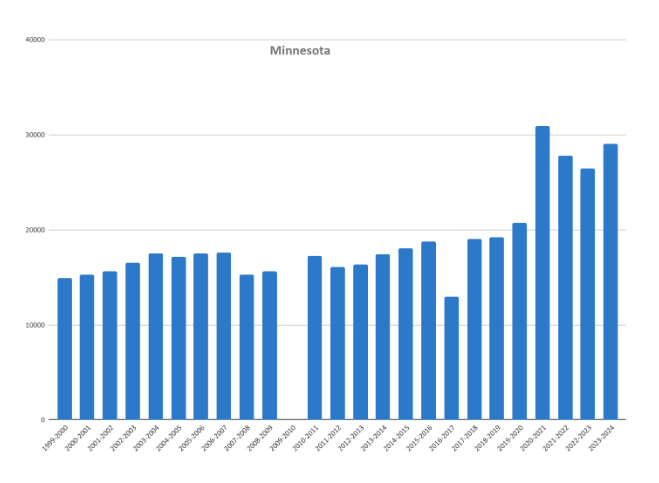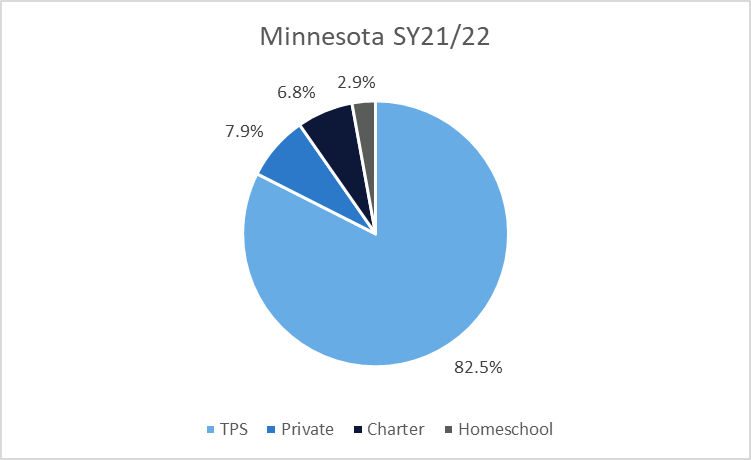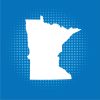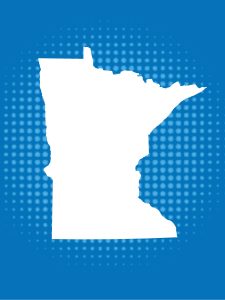Minnesota considers homeschooling a form of nonpublic schooling, similar to private schools.
History
In the midwestern United States, Minnesota legalized homeschooling in 1987 with the Compulsory Attendance Law H.F. 432. Before the state passed this law, families may have been prosecuted for homeschooling their children.
Regulation
In Minnesota there is one option for homeschooling, which is considered nonpublic education, similar to private schools. Minnesota requires parents who homeschool their children, ages 7 to 17, to complete and submit an annual reporting document to the local public school district superintendent by a certain date. See Minn. Stat. Ann. §120A.24, §120A.22, §121A.15. There do not appear to be any day or hourly requirements. However, parents are expected to maintain attendance records and documentation of instruction and schedules.
Similar to some other states, Minnesota has a citizenship instruction requirement. “The parent of a child is primarily responsible for assuring that the child acquires knowledge and skills that are essential for effective citizenship.” Minn. Stat. Ann §120A.22. The state requires instruction in reading, writing, literature, mathematics, science, and social studies.
Minnesota does not have parental education requirements, but does have requirements for nonparent instructors. However, until very recently, parents who were not certified teachers or did not have a bachelor’s degree had to ensure their homeschooled child was “assessed according to the procedures in subdivision 11.” The new requirement has not been published yet. There is disagreement about whether the change impacts the parental right to homeschool and the minimum qualification.
Homeschooled students in Minnesota must take a nationally norm-referenced test. The parent and the district superintendent must agree on the test and the exam administration. That said, homeschools that are accredited by a state recognized accrediting agency are not legally required to test.
Homeschooled students in Minnesota have broad access to public school offerings like courses, sports, and other extracurricular activities. This access is protected by statute and funded. Further, homeschooled students with special needs can access services through their local public schools. See section 125A.18 and section 126C.19 for more detailed information.
State Data
Minnesota homeschool participation has grown over the last two decades. For example, around 15,000 students reported homeschooling in 2000. That number increased to just over 30,000 at the height of the pandemic, and homeschooling remains strong.

Similarly, U.S. Census estimates indicate that around 4.6% of Minnesota families homeschooled in the spring of 2020 and increased to 9.7% by the fall of 2020. This compares to the national average of 11.1% during this time. Based on U.S. Census data, our calculations indicate that about 4.29% of K-12 students in Minnesota were homeschooled during the 2022-23 school year, and 4.93% during the 2023-24 school year. Due to survey changes, the data from 2020 reflects the percentage of households, while the data from following years reflects the percentage of students.
Cross-Sector Comparison
During the 2019-20 academic year, 2.1% of Minnesota’s K-12 students were homeschooled. Homeschool participation in the state was less than a third of the 7.3% of Minnesota students attending private schools and the 6.4% attending charter schools. In 2021-22, 2.9% of Minnesota’s K-12 students were homeschooled. About 7.9% of Minnesota students attended private schools, and 6.8% attended charter schools.


School Choice Context
In addition to homeschooling, parents in Minnesota have various educational choices available. These options include enrollment in traditional public schools with inter-district choice, limited intra-district choice, charter schools, magnet schools, and two private school choice tax credit programs. Both of these tax credit programs provide funding for homeschooled students.
Commentary
Minnesota offers all students broad access to educational opportunities in local public schools, including students with special needs. The state could improve transparency by reporting more of the data it collects from parents. For example, student age, grade, gender, and race information would all serve to inform policy and homeschool trends in the state and nation.

-
9.7% Families
Around 9.7% of families in Minnesota homeschooled during the height of the pandemic (Fall 2020).
-
1987 Legalized
Homeschooling was legalized in 1987 in the state of Minnesota.
-

-
More Information
9.7% Families
Around 9.7% of families in Minnesota homeschooled during the height of the pandemic (Fall 2020).
1987 Legalized
Homeschooling was legalized in 1987 in the state of Minnesota.

More Information
Last updated March 2025.